Collections
Library
Browse and search the IBD's collection of technical articles and videos
 IBD Membership Required
IBD Membership Required
Back in Auckland again: Our review of the 30th Asia Pacific Convention continues
By: Roger Putman
01/06/2008
Last month we reviewed the sustainability and legislative threats to the world wide brewing business. This time we consider the human resources and brewing science papers.
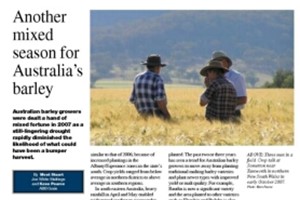 IBD Membership Required
IBD Membership Required
Southern Hemisphere - Crop Reports
01/06/2008
Barley and hop crop reports from the Southern Hemisphere - 2008
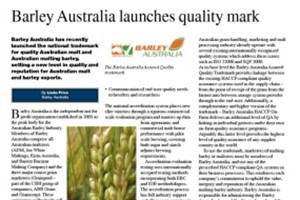 IBD Membership Required
IBD Membership Required
Barley Australia launches quality mark
By: Linda Price
01/06/2008
Barley Australia has recently launched the national trademark for quality Australian malt and Australian malting barley, setting a new level in quality and reputation for Australian malt and barley exports.
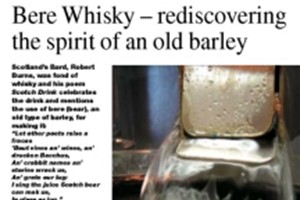 IBD Membership Required
IBD Membership Required
Bere Whisky – rediscovering the spirit of an old barley
By: Peter Martin, Xianmin Chang
01/06/2008
Scotland’s Bard, Robert Burns, was fond of whisky and his poem Scotch Drink celebrates the drink and mentions the use of bere (bear), an old type of barley, for making it: “Let other poets raise a fracas ’Bout vines an’ wines, an’ drucken Bacchus, An’ crabbit names an’ stories wrack us, An’ grate our lug: I sing the juice Scotch bear can mak us, In glass or jug.”
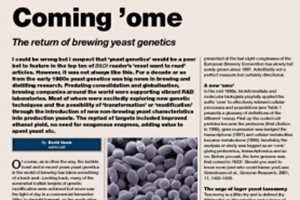 IBD Membership Required
IBD Membership Required
Coming 'ome - The return of brewing yeast genetics
By: David Quain
01/06/2008
I could be wrong but I suspect that ‘yeast genetics’ would be a poor bet to feature in the top ten of B&DI reader’s ‘most want to read’ articles. However, it was not always like this. For a decade or so from the early 1980s yeast genetics was big news in brewing and distilling research. Predating consolidation and globalisation, brewing companies around the world were supporting vibrant R&D laboratories. Most of whom were excitedly exploring new genetic techniques and the possibility of ‘transformation’ or ‘modification’ through the introduction of new non-brewing yeast characteristics into production yeasts. The myriad of targets included improved ethanol yield, no need for exogenous enzymes, adding value to spent yeast etc.
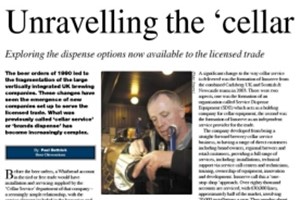 IBD Membership Required
IBD Membership Required
Unravelling the ‘cellar - Exploring the dispense options now available to the licensed trade
By: Paul Buttrick
01/06/2008
The beer orders of 1990 led to the fragmentation of the large vertically integrated UK brewing companies. These changes have seen the emergence of new companies set up to serve the licensed trade. What was previously called ‘cellar service’ or ‘brands dispense’ has become increasingly complex.
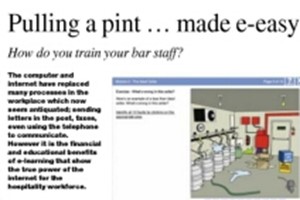 IBD Membership Required
IBD Membership Required
Pulling a pint … made e-easy
By: Chris Parr
01/06/2008
The computer and internet have replaced many processes in the workplace which now seem antiquated; sending letters in the post, faxes, even using the telephone to communicate. However it is the financial and educational benefits of e-learning that show the true power of the internet for the hospitality workforce.
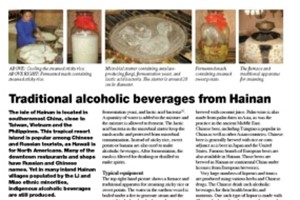 IBD Membership Required
IBD Membership Required
Traditional alcoholic beverages from Hainan
By: Yuji Teramoto
01/06/2008
The isle of Hainan is located in southernmost China, close to Taiwan, Vietnam and the Philippines. This tropical resort island is popular among Chinese and Russian tourists, as Hawaii is for North Americans. Many of the downtown restaurants and shops have Russian and Chinese names. Yet in many inland Hainan villages populated by the Li and Miao ethnic minorities, indigenous alcoholic beverages are still produced.
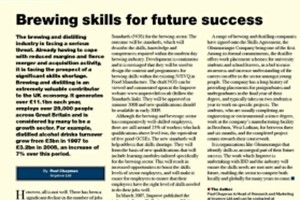 IBD Membership Required
IBD Membership Required
Brewing skills for future success
By: Paul Chapman
01/06/2008
The brewing and distilling industry is facing a serious threat. Already having to cope with reduced margins and fierce merger and acquisition activity, it is facing the prospect of a significant skills shortage. Brewing and distilling is an extremely valuable contributor to the UK economy. It generates over £11.1bn each year, employs over 25,000 people across Great Britain and is considered by many to be a growth sector. For example, distilled alcohol drinks turnover grew from £3bn in 1997 to £3.2bn in 2005, an increase of 7% over this period.
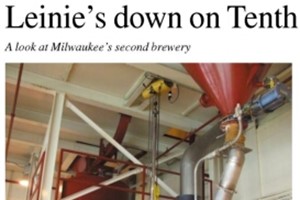 IBD Membership Required
IBD Membership Required
Leinie’s down on Tenth Street - A look at Milwaukee’s second brewery
By: Roger Putman
01/06/2008
Now the famous Milwaukee breweries of Blatz, Schlitz and Pabst are finding new uses as offices, condos and restaurant complexes; Miller is the only big name still brewing in the city. Back in 1988 it bought the craft brewer Jacob Leinenkugel based at Chippewa Falls in northern Wisconsin and in 1995 opened a second plant on 10th Street in Milwaukee which had once belonged to Heileman. So with the other big names no longer brewing, Leinie’s is Milwaukee’s second largest brewer at around 40,000bbl and you can see the gaunt shell of the old Pabst plant now topped with a huge sign reading ‘The Brewery’ across the busy Interstate 43 which goes north to Green Bay, the home of the Packers football team.
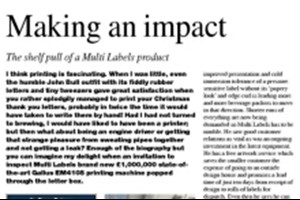 IBD Membership Required
IBD Membership Required
Making an impact - The shelf pull of a Multi Labels product
By: Roger Putman
01/06/2008
I think printing is fascinating. When I was little, even the humble John Bull outfit with its fiddly rubber letters and tiny tweezers gave great satisfaction when you rather splodgily managed to print your Christmas thank you letters, probably in twice the time it would have taken to write them by hand! Had I had not turned to brewing, I would have liked to have been a printer; but then what about being an engine driver or getting that strange pleasure from sweating pipes together and not getting a leak? Enough of the biography but you can imagine my delight when an invitation to inspect Multi Labels brand new £1,000,000 state-ofthe- art Gallus EM410S printing machine popped through the letter box.
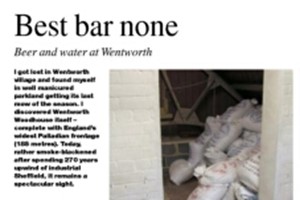 IBD Membership Required
IBD Membership Required
Best bar none - Beer and water at Wentworth
By: Roger Putman
01/06/2008
I got lost in Wentworth village and found myself in well manicured parkland getting its last mow of the season. I discovered Wentworth Woodhouse itself – complete with England’s widest Palladian frontage (185 metres). Today, rather smoke-blackened after spending 270 years upwind of industrial Sheffield, it remains a spectacular sight.
